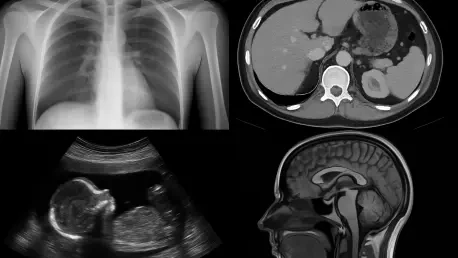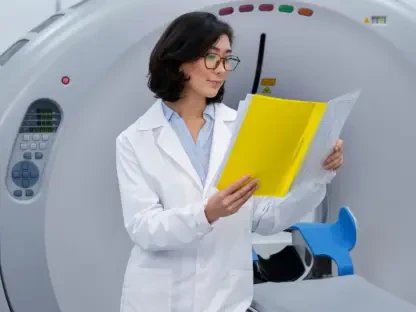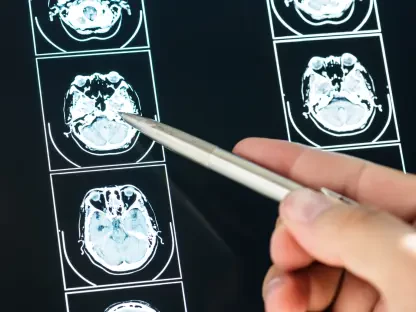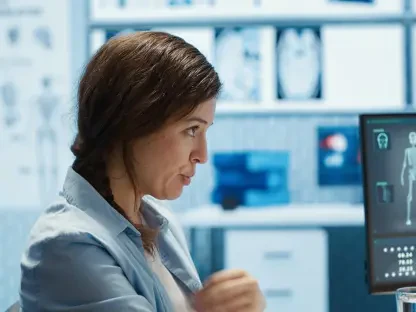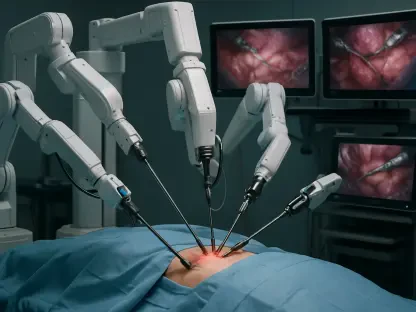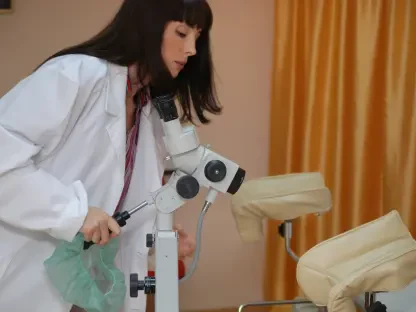Imagine a future where medical professionals can peer inside the human body with astonishing precision, using a device that not only enhances diagnostic accuracy but also prioritizes patient safety and affordability. A remarkable breakthrough unveiled on September 22, 2025, has brought this vision closer to reality with the introduction of a “crystal” camera. This innovative technology harnesses the power of perovskite crystals, originally developed for solar energy applications, to detect gamma rays and produce high-resolution images of internal organs. By offering a safer and more cost-effective alternative to current methods, this advancement holds the potential to transform nuclear medicine, particularly in identifying conditions like tumors and infections. As the healthcare industry seeks more efficient diagnostic tools, this development sparks curiosity about how such a novel approach could reshape the landscape of medical imaging and improve patient outcomes across the globe.
Unveiling the Potential of Perovskite Technology
The foundation of this groundbreaking camera lies in the unique capabilities of perovskite crystals, a class of materials recognized for their distinct structural properties. Initially hailed for their role in advancing solar energy solutions, perovskites, especially the CsPbBr3 variant, have now been adapted to serve as highly sensitive gamma-ray detectors. Unlike traditional materials such as cadmium zinc telluride or sodium iodide, which often come with high costs and limited effectiveness, these crystals deliver superior image clarity by capturing even the weakest signals. This shift represents a significant upgrade in the ability to visualize intricate details within the body, potentially leading to earlier and more accurate diagnoses of complex conditions. The adaptation of a material from an entirely different field underscores the innovative spirit driving this technology forward.
Beyond their impressive detection capabilities, perovskite crystals offer a practical edge that could redefine medical imaging standards. Their robustness and relatively low production costs stand in stark contrast to the fragility and expense of existing detectors, making them a viable option for widespread adoption. This affordability could democratize access to advanced diagnostic tools, particularly in regions where budget constraints limit healthcare resources. Furthermore, the structural stability of these crystals ensures durability, reducing the need for frequent replacements and maintenance. As research continues to refine their application, the integration of perovskites into medical devices could mark a turning point, bridging the gap between cutting-edge science and real-world healthcare needs with a focus on both efficiency and accessibility.
Transforming Diagnostics Through Advanced Imaging
At the core of this crystal camera’s impact is its enhancement of single-photon emission computed tomography (SPECT), a technique that generates detailed 3D images by detecting gamma rays emitted from a radioactive tracer within the body. Current detectors often grapple with issues like poor resolution and delicate construction, which can hinder their ability to provide clear insights into a patient’s condition. The perovskite-based system, however, excels by distinguishing between gamma rays of varying energies, resulting in sharper and more precise imagery. This improvement is vital for identifying subtle physiological changes that may indicate early stages of diseases such as cancer or neurological disorders, thereby enabling timely interventions that could save lives.
The implications of this enhanced imaging capability extend to the way medical professionals approach diagnostics on a broader scale. With clearer images, specialists can make more informed decisions, reducing the likelihood of misdiagnosis and unnecessary procedures. The technology also supports a more tailored approach to treatment by providing detailed visual data that can guide personalized care plans. For conditions where early detection is critical, such as certain types of infections or degenerative diseases, this level of precision offers a significant advantage. As hospitals and clinics begin to explore the integration of this tool, the potential for improved patient outcomes becomes increasingly evident, highlighting a pivotal shift in how internal health challenges are visualized and addressed.
Prioritizing Patient Safety and Affordability
One of the most compelling advantages of the crystal camera lies in its ability to minimize risks associated with medical imaging, particularly radiation exposure. Due to the heightened sensitivity of perovskite detectors, scans can be conducted more quickly and with lower doses of radioactive tracers, significantly reducing potential harm to patients. This advancement aligns with the ongoing push in healthcare to prioritize safety without compromising diagnostic quality. For individuals requiring frequent imaging, such as those with chronic conditions, this reduction in exposure could have a profound impact on long-term health, offering peace of mind alongside effective medical care.
Equally important is the economic benefit that perovskites bring to the table, addressing a critical barrier in healthcare accessibility. The cost-effectiveness that made these crystals a game-changer in solar energy applications translates directly to the production of gamma-ray detectors, potentially lowering the price of imaging equipment. This affordability could enable healthcare facilities, especially in underserved or resource-limited areas, to adopt state-of-the-art technology without straining budgets. By making advanced diagnostics more attainable, this innovation could help level the playing field, ensuring that more patients benefit from high-quality medical evaluations regardless of geographic or financial constraints.
Bridging Disciplines for Innovative Solutions
The journey of the crystal camera from concept to reality exemplifies the strength of cross-disciplinary collaboration in solving complex challenges. Spearheaded by Professor Mercouri Kanatzidis of Northwestern University, renowned for pioneering perovskite solar cells, and supported by Professor Yihui He of Soochow University, this project merges expertise from materials science and medical engineering. Their combined efforts have resulted in a pixelated gamma-ray sensor that showcases the practical promise of these crystals in producing detailed medical images. This partnership highlights how diverse scientific perspectives can converge to create tools that address pressing needs in healthcare with ingenuity and precision.
Further signaling the real-world potential of this technology is the formation of Actinia Inc., a spin-off company aimed at commercializing these advancements. This move toward practical implementation suggests that the crystal camera could soon become a staple in clinical environments, bridging the gap between laboratory innovation and patient care. Such initiatives demonstrate a commitment to translating scientific breakthroughs into tangible benefits, ensuring that the fruits of research reach those who need them most. As more institutions recognize the value of interdisciplinary approaches, similar collaborations may pave the way for additional breakthroughs, reinforcing the importance of unity across fields in tackling global health challenges.
Envisioning Tomorrow’s Diagnostic Landscape
Looking to the horizon, the crystal camera stands as a beacon of what’s possible when innovative materials are applied to medical challenges, with perovskites opening doors to uncharted territories in imaging. Researchers, including Kanatzidis and He, remain optimistic about further enhancing detector performance, scaling up manufacturing processes, and uncovering new uses for this technology. The potential to refine these tools could lead to even greater precision in diagnostics, offering hope for detecting diseases at their earliest stages when treatment is often most effective. This forward momentum suggests a future where medical imaging is not only more accurate but also more integrated into routine care.
Beyond technical improvements, the vision for this technology includes addressing systemic gaps in healthcare delivery, such as providing affordable diagnostics to underserved communities. If production can be scaled efficiently, the crystal camera might become a cornerstone of equitable healthcare, ensuring that advanced tools are not limited to well-funded facilities. The exploration of additional applications could also expand its impact, potentially aiding in areas like real-time monitoring during treatments. As efforts to refine and distribute this innovation progress, they leave a lasting mark on how diagnostic challenges are approached, setting a precedent for future advancements in medical technology.
